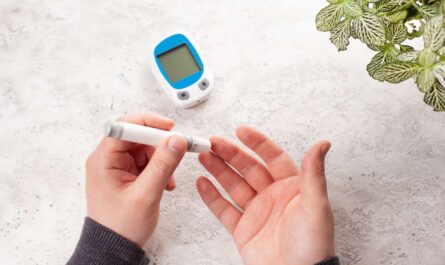Bionic prosthetics, also known as biomechatronic prosthetics or advanced prosthetic devices, use a combination of human tissues and robotic or computer technology to replace a missing body part. Advances in neural control technology allow bionic prosthetics to be more responsive and intuitively controlled, enabling better functionality restoration after amputation. Key products in the bionic prosthetics market include upper-limb bionic prosthetics which are being engineered to serve dual purposes of restoring anatomical function as well as enabling dexterous hand control using neural interfaces.
The global Bionic Prosthetics Market is estimated to be valued at US$ 1.5 Billion in 2024 and is expected to exhibit a CAGR Of 5.0% over the forecast period 2023 To 2030, as highlighted in a new report published by Coherent Market Insights.
Market Dynamics:
Advancements in neural control technology remains a key driver of growth in the bionic prosthetics market over the forecast period. Earlier generations of bionic prosthetics relied on electromyography sensors which detected muscle signals from the residual limb to control movement. However, advances in brain-computer interface technology now allow direct integration of neural signals from the brain to control bionic prosthetics in a more natural way. This has enabled intuitiveness and precision in bionic prosthetics that restores close to natural anatomical functions. In addition, the advent of high-density electrode arrays implanted on the cortical surface has enabled decoding of complex hand and arm movements from populations of neurons in the brain motor cortex. Such advancement in neural interfaces is revolutionizing dexterous control of bionic prosthetics. ongoing research efforts also aim to enable sensory feedback in bionic prosthetics by tapping into sensory areas of the brain, which would further improve functional restoration.
Segment Analysis
The bionic prosthetics market is segmented into upper limb prosthetics and lower limb prosthetics. Lower limb prosthetics dominates the market, accounting for over 65% share. This is because lower limb prosthetics are widely used due to high incidence of leg amputations globally. Within lower limb prosthetics, knee and ankle prosthetics hold the major share as they offer improved mobility and functionality to amputees compared to other lower limb prosthetic types.
PEST Analysis
Political: The growing healthcare expenditure by governments worldwide on advanced medical technologies and support for amputees is driving market growth. Various regulations have also ensured improved quality and efficacy of bionic prosthetics.
Economic: Developing economies with higher incidence of amputations and rising disposable incomes are presenting new opportunities to players. However, high costs of technologically advanced bionic prosthetics could limit widespread adoption.
Social: With higher life expectancies and better rehabilitative care, the population of amputees is surging globally. This is augmenting demand. Also, increasing social acceptance of disability is propelling the usage of cosmetic and myoelectric prosthetics for improved mobility and aesthetics.
Technological: Advancements in areas of materials, sensors, multifunctional prosthetics, automation, and battery technology are expanding capabilities and making prosthetics closer to natural limbs. 3D printing and additive manufacturing offer new opportunities for customized solutions.
Key Takeaways
The Global Bionic Prosthetics Market Demand is expected to witness high growth during the forecast period of 2023 to 2030.
Regional analysis indicates North America currently holds the major share of over 35% owing to rapid adoption and technological superiority. However, Asia Pacific is poised to emerges as the fastest growing region led by factors like large patient pool and infrastructure developments in countries like China and India.
Key players operating in the bionic prosthetics market are Sanofi, Pfizer Inc., Novartis AG, Teva Pharmaceutical Industries Ltd., F. Hoffmann-La Roche Ltd., Johnson & Johnson Services, Inc., AbbVie Inc., Bayer AG, Boehringer Ingelheim International GmbH., Eli Lilly and Company, GlaxoSmithKline plc., Takeda Pharmaceutical Company Limited, AstraZeneca, Bristol-Myers Squibb Company, Astellas Pharma Inc., Daiichi Sankyo Company Limited, and Merck & Co., Inc.
Note:
1. Source: Coherent Market Insights, Public sources, Desk research
2. We have leveraged AI tools to mine information and compile it



